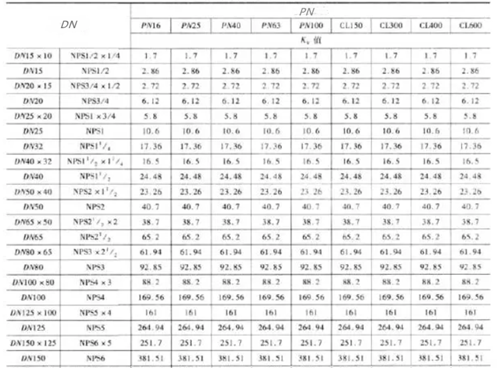The Flow resistance coefficient and pressure loss for valve
Valve resistance and pressure loss are different but they are so closely related, to understand their relationship, you must first understand the coefficient of resistance and the coefficient of pressure loss. Flow resistance coefficient depends on different flow structure, valve opening and medium flow rate, is a variable value. Generally speaking, fixed structure of the valve in a certain degree of opening is a fixed flow coefficient, you can calculate the valve inlet and outlet pressure according to the flow coefficient, this is the pressure loss.
The flow coefficient (discharge coefficient) is an important index to measure the flow capacity of the valve. It represents the flow rate when the fluid is lost per unit pressure through the valve. The higher the value is, the smaller the pressure loss when the fluid flows through the valve is. Most valve manufacturers include the flow coefficient values of valves of different pressure classes, types and nominal sizes in their product specifications for design and use. The value of the flow coefficient varies with the size, form and structure of the valve. In addition, the flow coefficient of the valve is also affected by the valve opening. According to different units, the flow coefficient has several different codes and quantitative values, among which the most common are:
- Flow coefficient Cv: Flow rate at 1psi pressure drop when water flows through the valve at 15.6 ° c (60 ° f).
- Flow coefficient Kv: The volume flow rate when the water flow between 5 ℃ and 40℃ generates a pressure drop of 1bar through the valve.
Cv=1.167Kv
The Cv value of each valve is determined by the cross-section of the solid flow.

Valve resistance coefficient refers to the fluid through the valve fluid resistance loss, which is indicated by the pressure drop (Differential Pressure △P) before and after the valve. Valve resistance coefficient depends on the size of the valve, the structure and the shape of the cavity, more depends on the disc, seat structure. Each element in the valve body chamber can be considered a system of components (fluid turning, expanding, shrinking, returning, etc.) that generate resistance. So the pressure loss in the valve is approximately equal to the sum of the pressure loss of the valve components. In general, the following circumstances can be increased valve resistance coefficient.
- The valve port is suddenly enlarged. When the port is suddenly enlarged, the velocity of the fluid part is consumed in the formation of eddy current, stirring and heating of the fluid, etc.;
- The gradual expansion of the valve port: When the expansion Angle is less than 40 °, the resistance coefficient of the gradually expanding round tube is smaller than that of the sudden expansion, but when the expansion Angle is more than 50°, the resistance coefficient increases by 15% ~ 20% compared with the sudden expansion.
- The valve port suddenly Narrows.
- The valve port smooth and even turn or corner turn.
- Symmetrical tapered connection of valve port.
In general, full-bore ball valves and gate valves have the least fluid resistance due to no turning and reducing, almost the same as the piping system, which is the valve type that offers the most excellent flow capacity.



Leave a Reply
Want to join the discussion?Feel free to contribute!